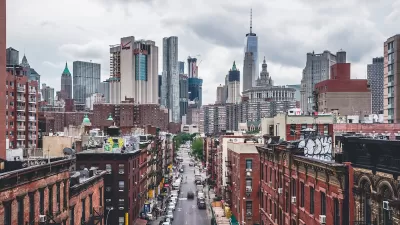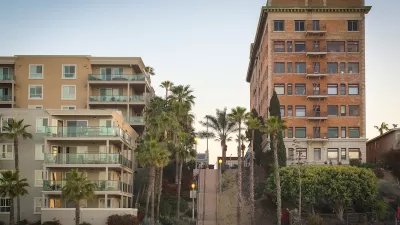The way we design cities affects housing costs differently than you might think.

As more of the world becomes urbanized, Cem S. Kayatekin and Lorenzo Uribe Sanmiguel argue that the way we build cities and “urban form” can have a dramatic impact on housing affordability, livability, and economic development.
The authors make a distinction between bottom-up and top-down development. “Today there are extensive discussions of bottom-up development and how it fosters communities and neighbourhood identity, while the lasting imprints of top-down regimes are still clearly visible in contemporary cities around the world.”
The debate over whether bottom-up or top-down systems are more inclusive and fair persists: proponents of bottom-up approaches see value to the organic development of different forms, while supporters of top-down development assert that uniform systems are more efficient.
Using case studies from Barcelona and Madrid, the authors discovered that “our research both confirmed and subverted the presumed theoretical link between urban form and housing stock, and the presumed supremacy of bottom-up over the top-down areas in fostering economic diversity.”
The study found that bottom-up areas did contain more small and affordable housing units, but that this was largely due to smaller plot sizes. “Older bottom-up areas seem to naturally lend themselves to having more small-scale plots. This is likely due to the incremental development of these areas, and the complex land ownership patterns that developed as a result.”
The broader implication for the housing crisis is that encouraging more small-lot development can boost supply and improve affordability. “What our research indicates is that deeper, more structural approaches may be worth considering – approaches that not only address the physical form of the city, but also the ownership patterns that underpin it.”
FULL STORY: “Urban form” and the housing crisis: Can streets and buildings make a neighbourhood more affordable?

Alabama: Trump Terminates Settlements for Black Communities Harmed By Raw Sewage
Trump deemed the landmark civil rights agreement “illegal DEI and environmental justice policy.”

Study: Maui’s Plan to Convert Vacation Rentals to Long-Term Housing Could Cause Nearly $1 Billion Economic Loss
The plan would reduce visitor accommodation by 25% resulting in 1,900 jobs lost.

Planetizen Federal Action Tracker
A weekly monitor of how Trump’s orders and actions are impacting planners and planning in America.

Wind Energy on the Rise Despite Federal Policy Reversal
The Trump administration is revoking federal support for renewable energy, but demand for new projects continues unabated.

Passengers Flock to Caltrain After Electrification
The new electric trains are running faster and more reliably, leading to strong ridership growth on the Bay Area rail system.

Texas Churches Rally Behind ‘Yes in God’s Back Yard’ Legislation
Religious leaders want the state to reduce zoning regulations to streamline leasing church-owned land to housing developers.
Urban Design for Planners 1: Software Tools
This six-course series explores essential urban design concepts using open source software and equips planners with the tools they need to participate fully in the urban design process.
Planning for Universal Design
Learn the tools for implementing Universal Design in planning regulations.
Caltrans
Smith Gee Studio
Institute for Housing and Urban Development Studies (IHS)
City of Grandview
Harvard GSD Executive Education
Toledo-Lucas County Plan Commissions
Salt Lake City
NYU Wagner Graduate School of Public Service





























